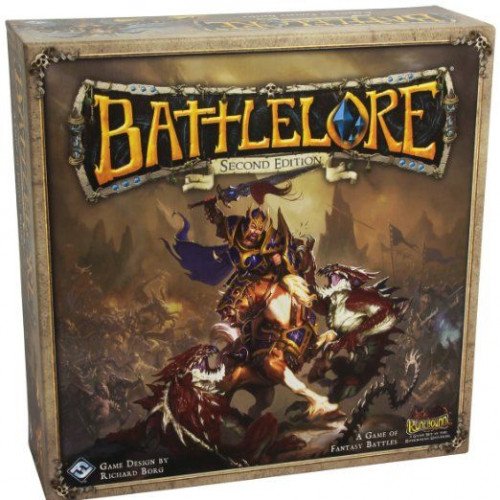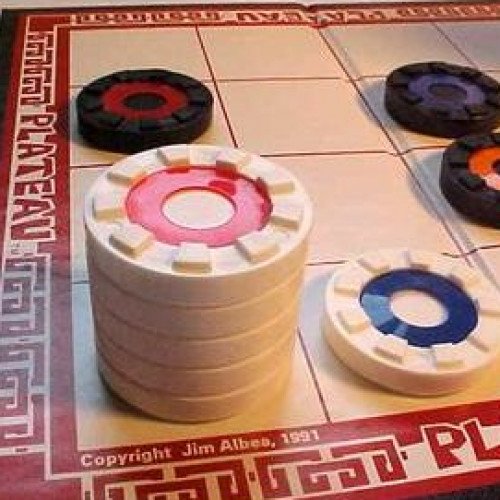BATTLELORE VS PLATEAU

BATTLELORE
BattleLore is a strategy board wargame for two players, created by Richard Borg and initially published by Days of Wonder in 2006 (and later by Fantasy Flight Games). The game is based on the same mechanics as Battle Cry, Memoir '44 and Commands & Colors: Ancients, but has a fantasy and medieval theme. BattleLore debuted at the 2006 Spiel game fair in Essen, Germany and was released worldwide on November 30 of that year. Typical setup for a game is 10–15 minutes. Beginning players can expect a 45-60 minute duration game, but experienced players can usually finish a game in about 30–45 minutes. Each player has a set of quick reference cards to help him keep rules in mind. Experienced players will rarely have to pull out the rulebook for clarification. The scenario book that comes with the basic box is organised as a tutorial sequence that introduces concepts one adventure at a time, making the game very easy to learn. Each adventure in Battlelore is pre-constructed, leaving the work of creating armies to the scenario author. Although with the Call to Arms Expansion (released May 2007) the players have (limited) control on deploying units to any given scenario. The Battlelore website offers an online scenario builder that helps fans create their own adventures. In September 2008 Fantasy Flight Games and Days of Wonder announced that the game would be moving to Fantasy Flight Games, along with all remaining stock. In 2013, a revised version, BattleLore Second Edition, was released by Fantasy Flight Games.
Statistics for this Xoptio

PLATEAU
Plateau is a two-player abstract strategy board game invented by Jim Albea. The game was developed over a two-year period culminating in its present form on May 12, 1986. The original name for the game was Pinnacle, but it was discovered that an older board/card game had that name, so around 1989 the name was changed to Plateau. From the 1980s through the 1990s Plateau was played at Science Fiction conventions mostly in the Southeastern United States. From the 1990s to the present, the game is played live at an online game site and via email. In 1997 a computer implementation of the game was created which facilitates email play and has a computer robot. Onboarding is adding one new piece to the play. This new piece can be placed anywhere that doesn't directly harm an opposing piece. For instance, you can onboard to any blank square or on top of any of your own pieces. The majority of Plateau moves are onboards. Instead of Onboarding or Moving, a player can choose to spend his turn exchanging prisoners. Prisoners are exchanged using the point values of the pieces. A simple value-for-value system is used. Since the pieces range in value from 1 point (for the mute) to 21 points (for the Ace) there are usually several combinations and options available for the players. The player initiating the exchange selects the pieces he wishes to exchange. These pieces will all add up to some point value. The responding player then has four options depending on the point values of the prisoners that he holds.